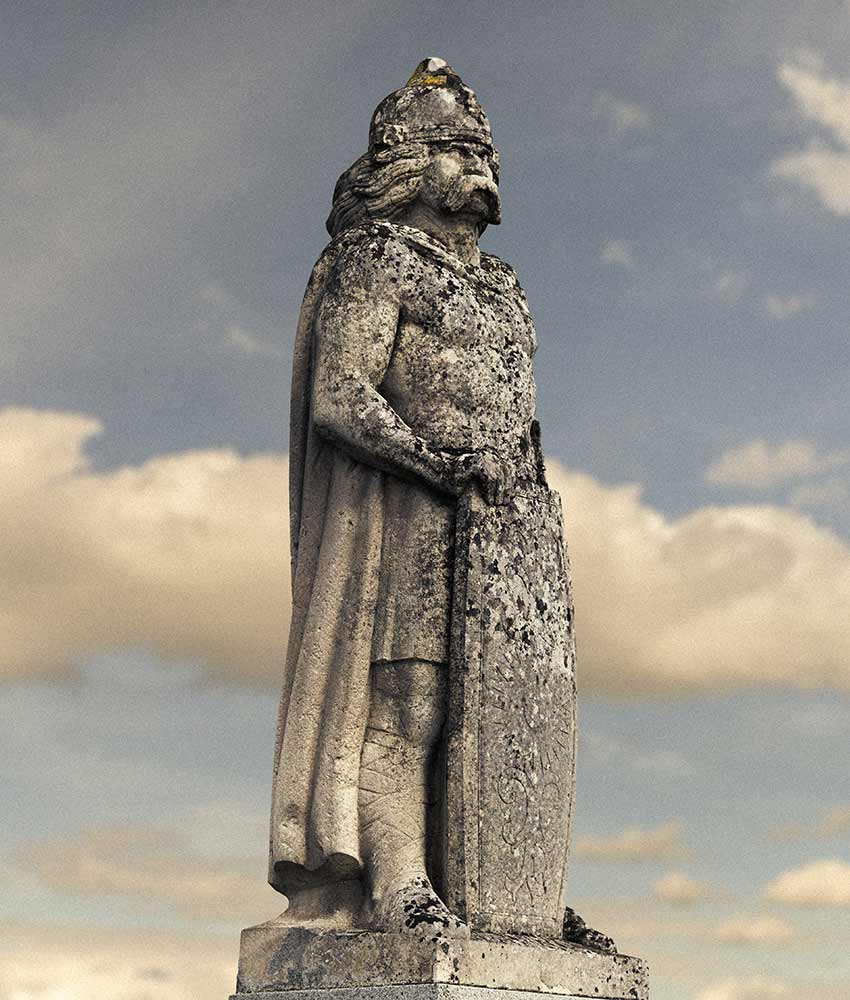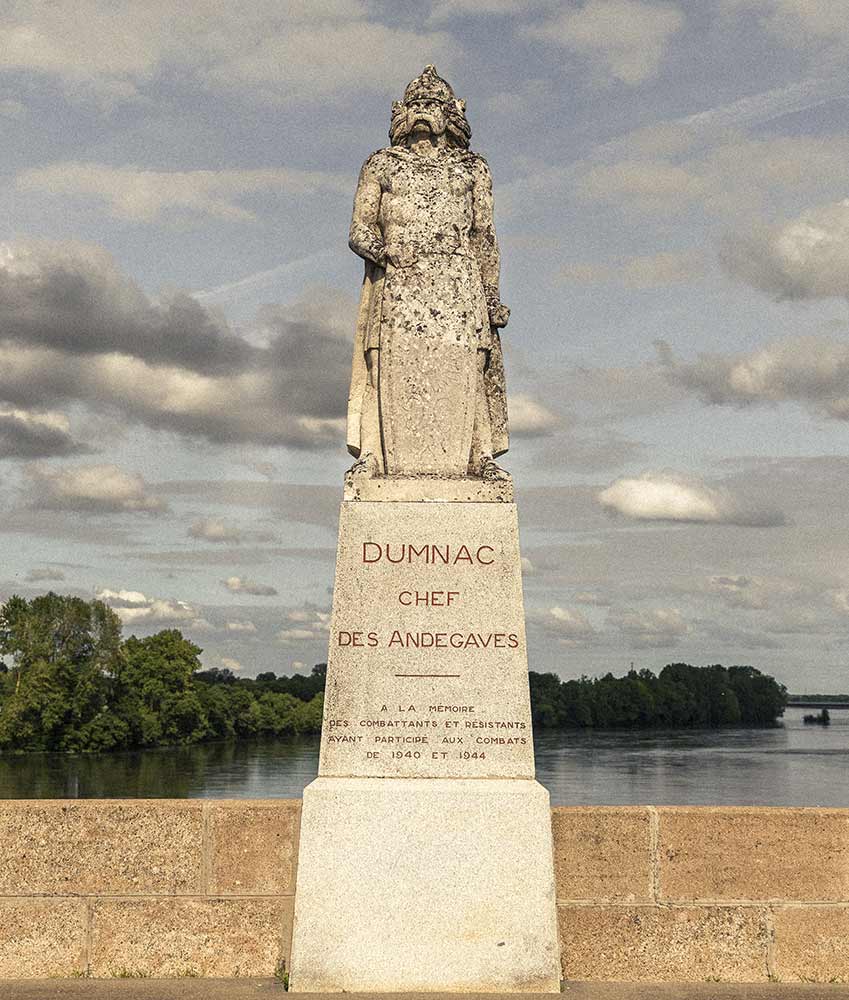Gaul, in the year 52BC. Julius Caesar has invaded Gaul. Vercingetorix has had to take refuge in Alesia following defeat by the Romans. Running out of food and drink, Vercingetorix and his army surrender.
On the banks of the river Loire, however, Dumnacus, chief of the Andecavi tribe, refuses to admit defeat and lays siege to the town of Poitiers, ruled by an ally of the Romans, Duratuis. After 2 days of courageous battle, our hero, Dumnacus, is forced into permanent exile. He was brave enough to stand up to Caesar, but his decimated army was unable to resist the Roman soldiers.
Belying his mischievous blue eyes and rebellious moustache, the name Dumnacus actually comes from the word “dumnos”, meaning dark, black depths. Dumnacus, always depicted bearing a sword in his belt and often a shield on his arm, went down in history because of his tenacity and commitment
We have very few written texts from the period. Anjou is first mentioned in history in Julius Caesar’s account of the Gallic War. Here he mentions a battle fought on the shores of the river Loire between one of his lieutenants and an Andecavian chieftain named Dumnacus. Although there is no mention of it in the texts, the last battle fought by Dumnacus may have taken place at Les Ponts-de-Cé. Legend has it that he surprised Caesar’s soldiers as they were carving his name on the bridge, interrupting them and preventing them from writing it in full. Thus Caesar himself ensured that the name of Dumnacus went down in history.
In the 19th century, the Roman period once more became a centre of interest, and the people of Anjou rediscovered their hero in the writings of historians, whose essays depicted Dumnacus as a glorious yet mysterious character.ux.


Representations of Dumnacus
The 19th century sculptor David d’Angers, best known for his pedimental sculpture for the Pantheon in Paris, asked one of his pupils to sculpt the silhouette of Dumnacus so that it could be displayed in a niche on the pedestal of the statue of King René, which can still be seen opposite Angers Castle
Later, in 1887, a statue was erected on the bridge at Les Ponts-de-Cé, in honour of this rebel hero, who was first to defend the freedoms of Anjou. The bridge has been named after him and henceforth features the following inscription:
I shall not rest until I have seen the statue of Dumnacus on the banks of the Loire, defying the shadows of those soldiers of Ancient Rome, sleeping in Caesar’s camp
David d’Angers
Although the statue was destroyed during the first world war, it was quickly rebuilt at the request of the people of Les Ponts-de-Cé, proof of their admiration for their Gallic hero.
Since then it has stood proudly above the river Loire, a symbol of Dumnacus’ resistance and commitment.
